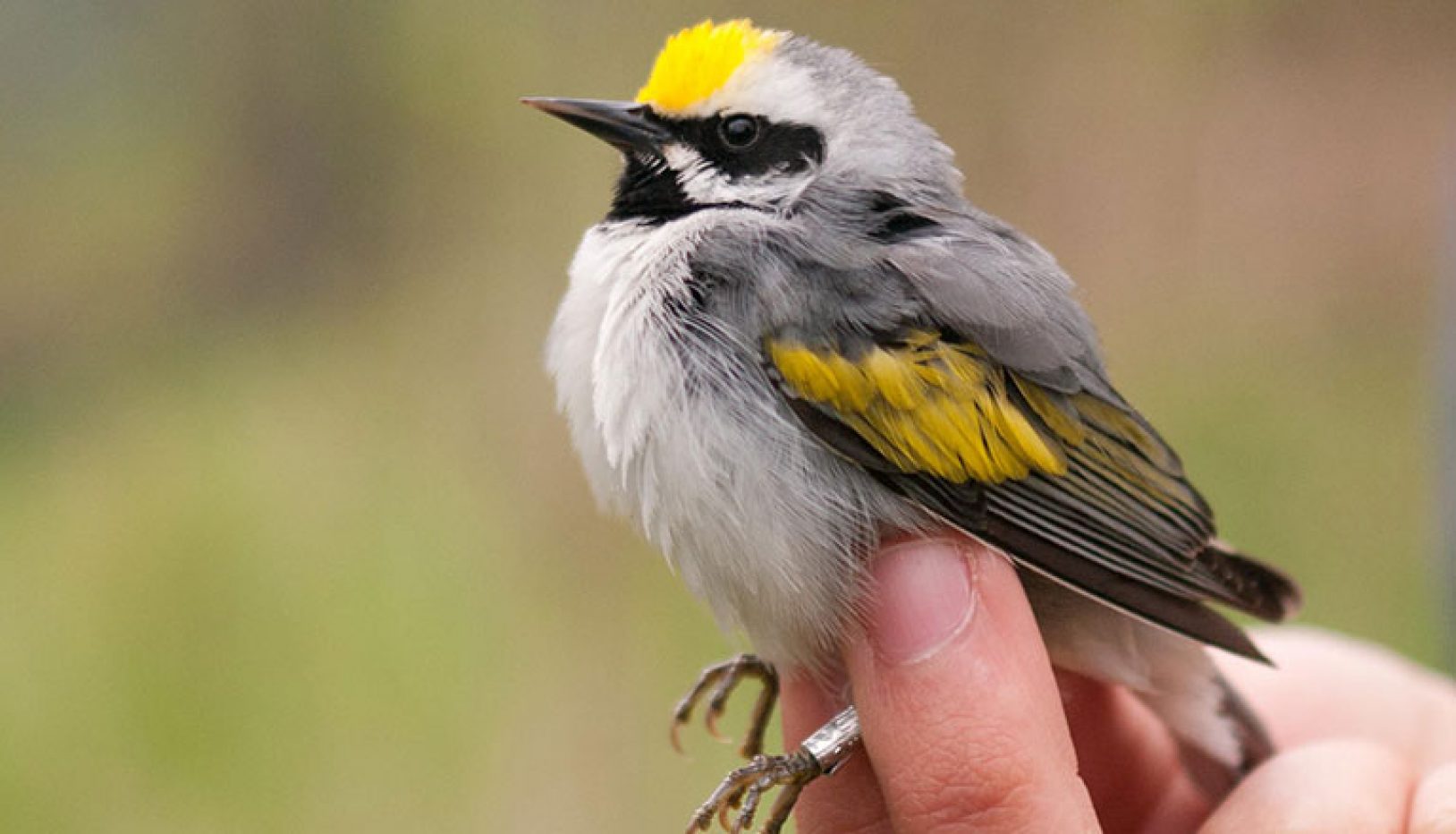It’s hard to believe a tiny warbler weighing less than half an ounce has the power to permanently preserve hundreds of acres of critical habitat surrounding the Appalachian Trail. Yet thanks to the Golden-winged Warbler and the Neotropical Migratory Bird Conservation Act, the Southern Appalachian Highlands Conservancy (SAHC) conserved nearly 800 acres of ecologically significant habitat within the Highlands of Roan landscape on the border of North Carolina and Tennessee.
For thousands of people who hike the Appalachian Trail in the Highlands of Roan every year, high-elevation grassy balds—grass or shrubcovered mountain summits—evoke feelings of wonder and inspiration. However, the value of the Roan runs far deeper than the views. Beyond world-renowned public recreation opportunities, this unique landscape is home to globally significant habitat that is a high priority for protection by federal, state, and private conservation organizations. For over forty years, SAHC has worked with partners to secure a network of over 25,000 protected acres in the Roan, in large part to protect critical habitat for imperiled species such as the Golden-winged Warbler.
The Golden-winged Warbler is a Neotropical migrant that spends summers breeding in the Southern Appalachians before heading south to Costa Rica and Nicaragua for the winter. In recent decades, breeding populations in the eastern U.S. have rapidly declined, and the bird is now being petitioned for listing as an endangered species. In 2010, the presence of this small migratory bird changed the future of SAHC’s land protection work.
During that year, a recession was in full swing and many private landowners tried to sell undeveloped mountain land quickly. SAHC focused on purchasing a portion of the National Trails Tract in the Roaring Creek Valley, a biologic gem adjacent to Pisgah National Forest in the shadow of the Appalachian Trail in North Carolina. The property contains diverse forest types, including rich cove, northern hardwood, Appalachian montane oak, and early successional forest. The early successional or young forest may not look like much—an old meadow slowly returning to forest with isolated shrubs and trees and a forested edge. Yet what some view as scrubby, neglected fields were a key element that helped ensure the conservation future of this property. Golden-winged Warblers are ground-nesting birds that breed in early successional forests, and protecting this habitat type is critical to the species’ survival. The warblers were observed on public lands adjoining the National Trails Tract, and so the SAHC suspected the private property was used by the birds and aimed to protect and manage the habitat to encourage nesting. But these semi-open fields are also often desirable sites for housing development.

Habitat managed for Golden-winged Warblers, on the Grassy Ridge tract adjoining Pisgah National Forest. Photo: Southern Appalachian Highlands Conservancy
While SAHC struggled to raise funds to buy the property, it took a risk by obtaining a loan to fill the funding gap and purchase the land in a timely fashion. Enter the U.S. Fish and Wildlife Service and a grant program called the Neotropical Migratory Bird Conservation Act (NMBCA). This program provided the pivotal connection between an urgent funding need and critical habitat conservation. SAHC was awarded a federal costshare grant and applied it toward retiring the loan, thereby securing the property’s permanent protection. The grant also assured an active land management program for the property that prioritizes early successional habitat for Golden-winged Warblers and other migratory birds. SAHC retired the remainder of the loan by selling the majority of the National Trails Tract to the North Carolina Wildlife Resources Commission (NCWRC). The SAHC and NCWRC work together to protect and manage the critical habitat on this land.
The National Trails Tract was fundamental in putting the NMBCA grant program on SAHC’s radar and making the protection of Golden-winged Warbler habitat an organizational priority. Two years later, SAHC was poised to protect the 600-acre Grassy Ridge tract, one of the highest conservation priorities for the organization in its 40-year history. The property joins Pisgah National Forest at Grassy Ridge Bald, a premier hiking destination via a spur trail off the Appalachian Trail in North Carolina. The tract contains coveted early successional forest habitat as well as several active Golden-winged Warbler nests. This time, SAHC was prepared with a funding tool that fit this critically important acquisition. The NMBCA grant program provided needed dollars to complete the purchase and today the majority of this tract is part of a North Carolina State Natural Area. SAHC is holding the remaining 40 acres as a preserve, where its staff and supporters tell the story of how this special landscape will remain protected for generations to come.
Both the National Trails Tract and the Grassy Ridge properties are managed and monitored annually for Goldenwinged Warblers by SAHC and a team of federal and state partners, in cooperation with the National Audubon Society and the Appalachian Mountains Joint Venture. This small bird has made a large impact in the permanent preservation and management of one of the most significant and beloved landscapes in the Southern Appalachians. Listen for the buzzy song of the warbler—it might be the missing piece to your conservation puzzle.

